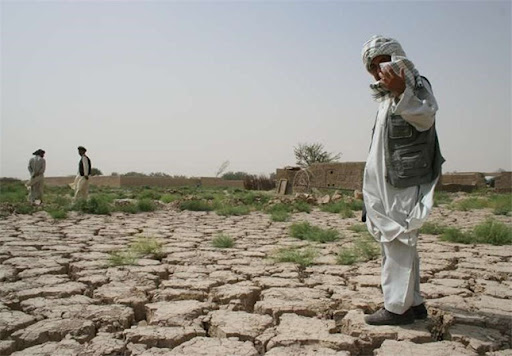
In the rugged, mountainous terrains of Afghanistan, a country whose people have historically contributed negligible amounts of carbon emissions, the impacts of the global climate crisis are being felt with harrowing intensity. Afghanistan's emissions are a mere fraction of those produced by industrialized nations, yet it is one of the countries most vulnerable to climate change's devastating effects. This stark injustice underscores the broader inequities in the global climate crisis, where those least responsible are often the ones who suffer the most.
Recently, Afghanistan experienced devastating floods caused by unusually heavy seasonal rains. The worst-hit provinces include Baghlan, Badakhshan, Ghor, and Herat. The floods have led to significant casualties and widespread destruction. Reports indicate that at least 315 people have died, over 1,600 have been injured, and thousands have been displaced (Al Jazeera) (UN News).
Baghlan province is particularly affected, with more than 3,000 houses destroyed, extensive damage to farmlands, and numerous livestock losses. The floods have also disrupted critical infrastructure such as schools and health centers (UN News). The Taliban government has declared a state of emergency in the affected areas and is coordinating with UN agencies to provide emergency assistance, including food, medicine, and temporary shelters (Al Jazeera) (The New Humanitarian).
Also Read: A Daughter's Dowry: Parents' Sacrifices and Unfulfilled Wishes
The UN and other humanitarian organizations are actively involved in relief efforts, distributing essential supplies and offering medical support. However, the extent of the disaster underscores the need for long-term, sustainable solutions to enhance resilience against climate-induced disasters in Afghanistan (UN News) (The New Humanitarian).
Rahman Gul, a resident of Baghlan province, reported that recent floods devastated their home, crops, and livestock. As a result, his family has been displaced from Baghlan. Similarly, hundreds of other families have been affected, losing everything. They urgently need emergency assistance and support.
A Landscape of Challenges
Afghanistan's geography makes it particularly susceptible to climate change. The country is characterized by its arid and semi-arid landscapes, which are highly sensitive to temperature fluctuations and changes in precipitation. Over the past few decades, Afghanistan has experienced a noticeable increase in average temperatures and a decrease in annual rainfall. These changes have exacerbated the severity and frequency of droughts, which have had profound effects on the country's predominantly agrarian society.
Agriculture, which employs about 60% of the Afghan workforce, is heavily dependent on predictable weather patterns. Droughts have led to reduced water availability for crops and livestock, severely impacting food security. The United Nations has reported that millions of Afghans are facing acute food insecurity, a crisis that is intensified by the country's fragile political and economic state.
Water Scarcity and Resource Strain
The climate-induced reduction in water resources is one of Afghanistan's most pressing issues. Glacial melt from the Hindu Kush mountains, which traditionally fed the rivers and irrigation systems of the region, is occurring at an accelerated pace. This not only affects the immediate water supply but also threatens long-term water availability for millions of people.
Water scarcity has led to disputes over access to this vital resource, increasing tensions within communities and sometimes sparking conflict. These conflicts are often exacerbated by the country's ongoing socio-political instability, making effective management and equitable distribution of water resources a challenging task.
The Human Toll
Beyond the environmental and economic impacts, the human toll of the climate crisis in Afghanistan is significant. Rising temperatures and reduced agricultural productivity have led to displacement, with many rural inhabitants migrating to urban areas in search of better opportunities. This migration places additional stress on already limited urban resources and infrastructure, leading to overcrowding and deteriorating living conditions.
The health impacts are also severe. Malnutrition is on the rise due to food scarcity, and the spread of diseases, such as water-borne illnesses, is becoming more prevalent as clean water becomes scarce. The mental health of Afghans is also affected, as the constant struggle to survive in increasingly harsh conditions takes a psychological toll.
Global Responsibility and Local Resilience
Addressing the climate crisis in Afghanistan requires a multi-faceted approach. On a global scale, there needs to be a stronger commitment to reducing greenhouse gas emissions by industrialized nations, which are the primary contributors to global warming. Additionally, international support in the form of climate finance is crucial. Such funds can help Afghanistan develop resilient agricultural practices, improve water management systems, and build infrastructure that can withstand the impacts of climate change.
Locally, efforts are being made to adapt to the changing climate. Afghan farmers are increasingly adopting drought-resistant crops and more efficient irrigation techniques. Community-based water management systems are being developed to ensure fair distribution and sustainable use of water resources. Moreover, there is a growing emphasis on reforestation and soil conservation to combat desertification and restore ecological balance.
Conclusion
The plight of Afghans in the face of the climate crisis is a stark reminder of the global inequities inherent in this issue. Despite their minimal contribution to global carbon emissions, they are enduring some of the harshest impacts of climate change. It is a compelling call to action for the international community to acknowledge this disparity and work collectively to support the most vulnerable populations.
To build a more just and sustainable future, wealthier nations must step up their climate commitments and provide the necessary resources to help countries like Afghanistan adapt and thrive amidst these challenges. Only through global cooperation and a renewed sense of responsibility can we hope to address the profound injustices of the climate crisis and ensure a livable planet for all.